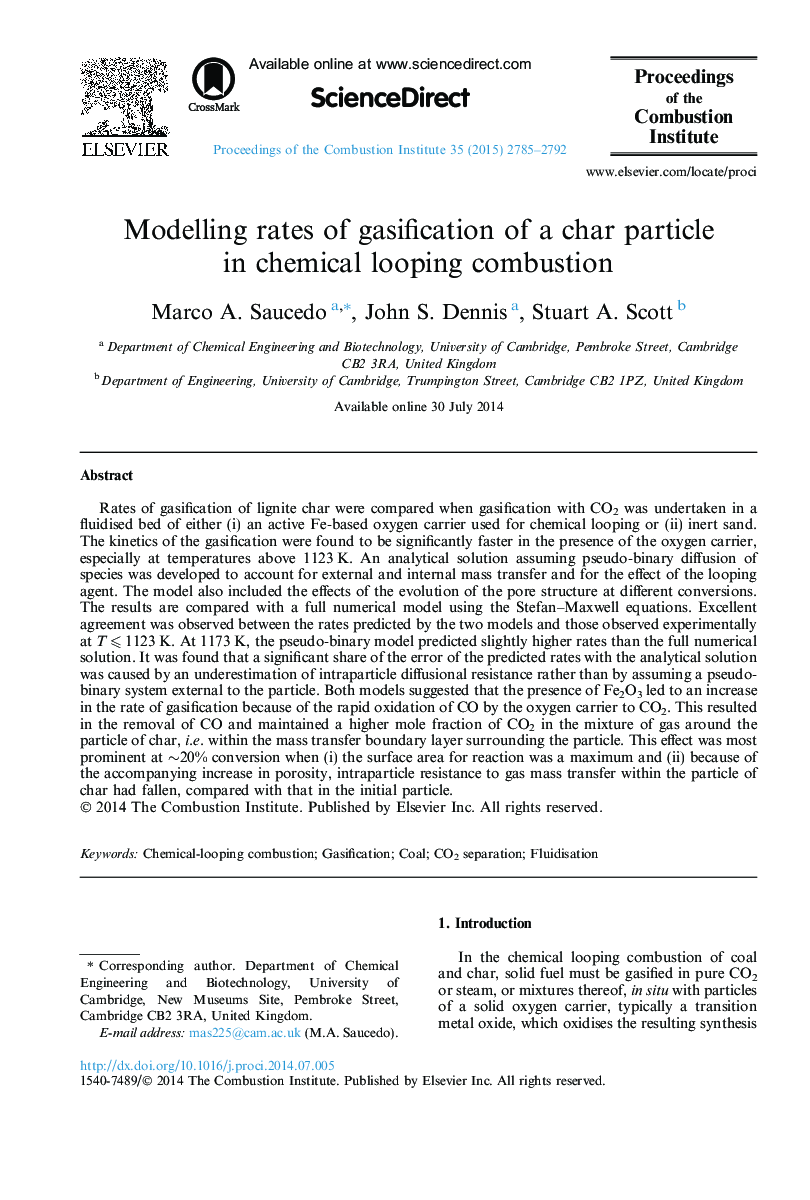| Article ID | Journal | Published Year | Pages | File Type |
|---|---|---|---|---|
| 4915528 | Proceedings of the Combustion Institute | 2015 | 8 Pages |
Abstract
Rates of gasification of lignite char were compared when gasification with CO2 was undertaken in a fluidised bed of either (i) an active Fe-based oxygen carrier used for chemical looping or (ii) inert sand. The kinetics of the gasification were found to be significantly faster in the presence of the oxygen carrier, especially at temperatures above 1123 K. An analytical solution assuming pseudo-binary diffusion of species was developed to account for external and internal mass transfer and for the effect of the looping agent. The model also included the effects of the evolution of the pore structure at different conversions. The results are compared with a full numerical model using the Stefan-Maxwell equations. Excellent agreement was observed between the rates predicted by the two models and those observed experimentally at T ⩽ 1123 K. At 1173 K, the pseudo-binary model predicted slightly higher rates than the full numerical solution. It was found that a significant share of the error of the predicted rates with the analytical solution was caused by an underestimation of intraparticle diffusional resistance rather than by assuming a pseudo-binary system external to the particle. Both models suggested that the presence of Fe2O3 led to an increase in the rate of gasification because of the rapid oxidation of CO by the oxygen carrier to CO2. This resulted in the removal of CO and maintained a higher mole fraction of CO2 in the mixture of gas around the particle of char, i.e. within the mass transfer boundary layer surrounding the particle. This effect was most prominent at â¼20% conversion when (i) the surface area for reaction was a maximum and (ii) because of the accompanying increase in porosity, intraparticle resistance to gas mass transfer within the particle of char had fallen, compared with that in the initial particle.
Related Topics
Physical Sciences and Engineering
Chemical Engineering
Chemical Engineering (General)
Authors
Marco A. Saucedo, John S. Dennis, Stuart A. Scott,
